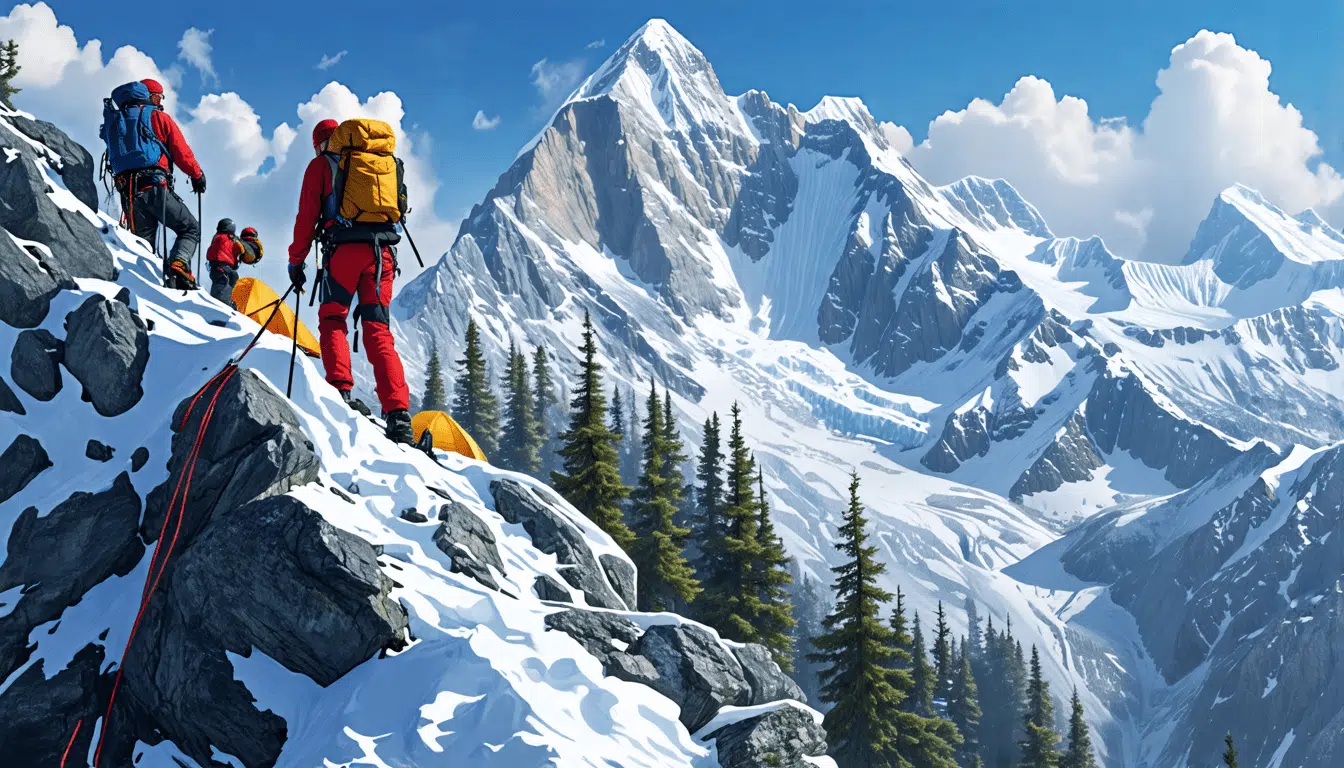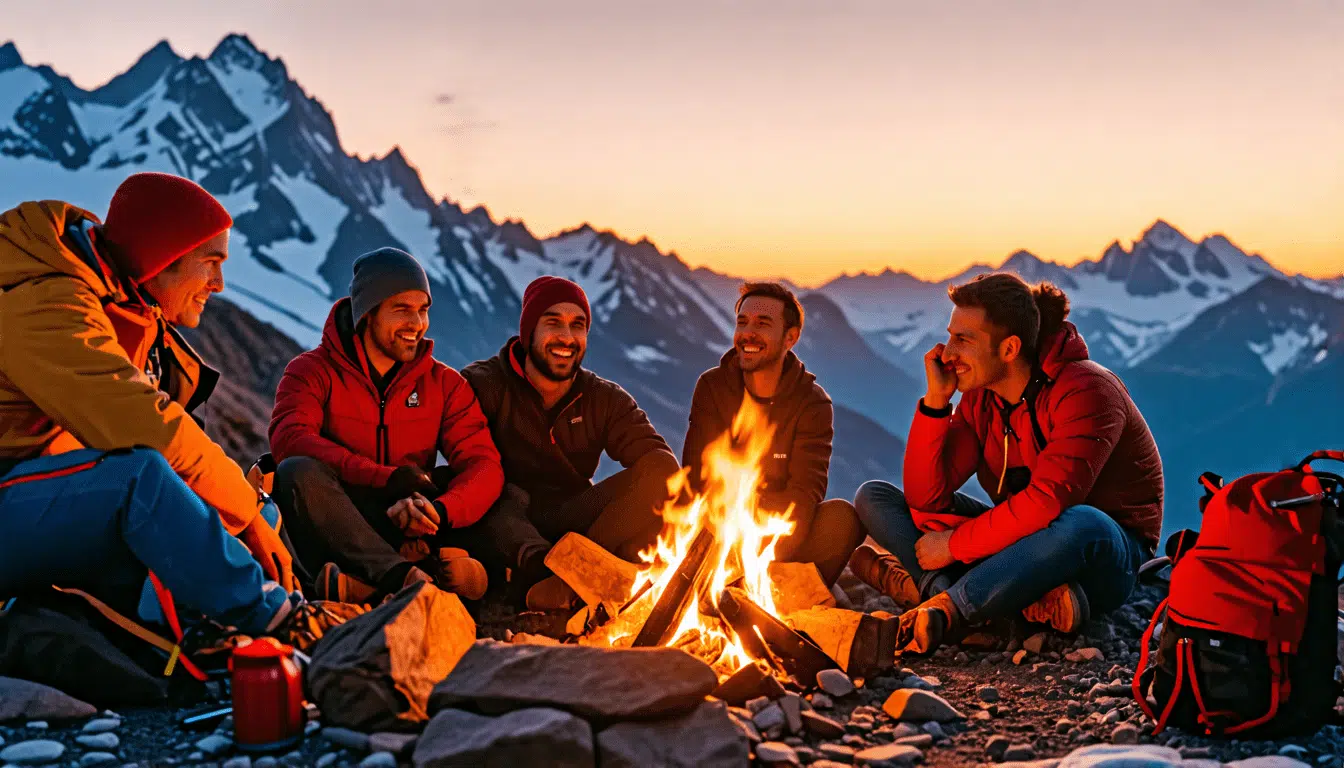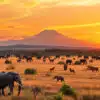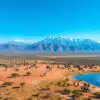What Is It Like Climbing Kilimanjaro?
Introduction to Kilimanjaro Climbing Experience
So, you’ve heard about it, right? That snow-capped giant standing tall in Tanzania, Mount Kilimanjaro. It’s not just any mountain; it’s the highest free-standing peak in the world! Imagine the thrill of standing at 19,341 feet above sea level, looking down at the earth while feeling on top of it. Sounds enticing, doesn’t it? That’s exactly why climbing Kilimanjaro is on so many adventurers’ bucket lists.
Climbing Kilimanjaro is not just a hike; it’s a journey like no other. It’s where you challenge your physical limits, push your mental boundaries, and witness some of the most breathtaking scenery on our planet. The allure of this trek lies in its unique combination of adventure and natural beauty. With every step, you get to experience lush rainforests, alpine deserts, and, finally, that iconic glacial summit. It’s a kaleidoscope of landscapes and emotions.
Why is Kilimanjaro so popular among climbers from around the globe? Well, it doesn’t require technical mountaineering skills, making it accessible to anyone with determination and a reasonable level of fitness. From seasoned trekkers to beginners seeking a transformative experience, Kilimanjaro has something magical to offer. Plus, imagine the stories you’ll have to share—tales of perseverance, camaraderie, and possibly a few missteps along the way.
Introduction to Kilimanjaro Climbing Experience
Overview of Mount Kilimanjaro
Picture this: an awe-inspiring giant standing tall amidst the Tanzanian landscape, its snow-capped peak piercing the sky. That’s Mount Kilimanjaro for you. As the highest freestanding mountain in the world, Kilimanjaro towers at 5,895 meters (19,341 feet). It’s not just the height that makes it special. This mighty mountain is also a UNESCO World Heritage Site, boasting a range of climatic zones—from lush rainforests at the base to arctic conditions at the summit.
Why Climbing Kilimanjaro is a Unique Adventure
So what makes climbing Kilimanjaro such a big deal? First off, it’s not your typical mountain climbing experience. Unlike the technical climbs of the Himalayas, Kilimanjaro is often referred to as a walk-up mountain. But don’t be fooled—it’s a challenging trek that tests your endurance, determination, and mental strength. Here, you can quite literally walk from the equator to the Arctic within a few days. How cool is that?
And it’s not just about bragging rights (though, let’s face it, saying I’ve climbed Kilimanjaro sounds pretty awesome). The journey offers profound personal insights. Imagine catching the sunrise over the African plains, each step taking you closer to the roof of Africa. The sense of achievement when you finally reach Uhuru Peak is indescribable—a mix of exhaustion, exhilaration, and overwhelming joy.
Highlighting the Popularity Among Climbers
With an estimated 35,000 trekkers attempting the climb each year, Kilimanjaro has cemented its spot as a top destination for adventure seekers. Wondering why? One reason is its accessibility. Unlike other high peaks, you don’t need specialized climbing skills to conquer Kilimanjaro. A decent level of fitness, the right preparation, and a strong mindset can get you to the top.
Take Sarah, for example. She’s a finance executive from New York who decided to take on Kili as a personal challenge. Prior to this, Sarah’s idea of a workout was a brisk walk through Central Park. But with some perseverance, training, and the spirit to push her boundaries, she found herself standing at the summit, tears streaming down her face as she looked out at the curvature of the Earth. If she could do it, why not you?
It’s the stories like Sarah’s that add to the mountain’s allure. Each climber brings their own narrative, making Kilimanjaro not just a physical journey, but a tapestry of countless personal triumphs. So, are you ready to add your chapter to this incredible tale?
Conclusion
Alright, maybe that question was a bit rhetorical. But seriously, if reading this stirs something within you—an itch to test your limits or a longing for extraordinary experiences—it might be time to consider Kilimanjaro. Climbing this iconic peak offers more than just spectacular views; it’s an adventure that will reshape you in ways you never imagined. Happy climbing!
Preparation for the Climb
Physical and Mental Preparation Required
So, you’re considering climbing Kilimanjaro? That’s awesome! But let’s get real for a moment—this isn’t just a walk in the park. You need to be in good physical shape. It’s like training for a marathon or a triathlon. The higher you get, the less oxygen there is, and your body needs to be ready for that challenge. Get into a routine of regular cardio workouts—running, cycling, swimming, you name it. But don’t forget to include strength training, because you’ll be carrying a backpack and trekking for hours every day.
And it’s not just your body that needs prepping; your mind plays a huge role too. Picture yourself several days into the hike, exhausted and cold. Your mental toughness will be your best friend. Did you know that most climbers who turn back do so not because of physical ailments, but because they’re mentally spent? Preparing your mind is as important as training your body. Meditating, using positive affirmations, and even visualizing yourself at the summit can be powerful tools in your prep kit.
Necessary Gear and Equipment
Let’s talk gear. What you bring can make or break your trip. First off, get yourself a good pair of hiking boots. Break them in months before your climb to avoid pesky blisters. Trust me, you do not want to be dealing with those halfway up the mountain. Then there’s the clothing—you’ve got to think layers. Temperatures can swing dramatically, so a versatile layering system of moisture-wicking base layers, insulating mid-layers, and waterproof outer layers is crucial. And, yes, definitely pack that puffy jacket!
Next, you’ll need a reliable backpack. A 30-40 liter daypack should suffice for most of your essentials—water, snacks, an extra jacket, and personal items. Oh, and don’t forget a headlamp, because it gets dark early, and summit night typically starts around midnight. Other essentials include a good sleeping bag rated for sub-zero temperatures, trekking poles to save your knees, and a hydration system. Pro tip: bring along some high-calorie snacks like energy bars or trail mix. It’ll keep you fueled when you’re burning through calories faster than you can count.
Choosing the Best Route and Time to Climb
Choosing the best route is like picking your favorite ice cream flavor—everyone’s got an opinion. Kilimanjaro has several routes, each with its own unique landscape and challenges. The Marangu Route is often called the Coca-Cola route because it’s considered easier with hut accommodations, while the Machame Route, known as the Whiskey route, is a bit more rugged but offers excellent acclimatization profiles. Then there’s the Lemosho route, which is less crowded and incredibly scenic, ideal if you’ve got a week or more to spare.
Time to climb is another biggie. Generally, January to mid-March and June to October are the best months. The weather tends to be more predictable, but remember, predictable doesn’t mean perfect. You can still face sudden rainstorms or chilly winds. How do you choose? Think about your own schedule and preferences. Quick tip: if you’re keen to avoid crowds, steer clear of the peak months of July and August.
Take my buddy Jake, for example. He opted for the Lemosho route in early February to dodge both the crowds and the worst of the rain. He came back with stories of empty trails, stunning sunrises, and even a near-constant view of the summit—a far cry from what he’d have experienced in the busier months.
So, there you have it. A little dedication, the right gear, and smart planning will set you up for an adventure of a lifetime. Ready to start planning? Your Kilimanjaro experience awaits.
The Climbing Experience
Day-to-Day Breakdown of the Climb
Embarking on the journey up Kilimanjaro feels like a series of unfolding chapters in an epic adventure novel. Each day brings its own set of surprises and hurdles. On the first day, you’ll likely start at the trailhead of your chosen route. Think lush rainforests where you might spot blue monkeys and colobus monkeys, setting the tone with a sense of entering a world that’s almost magical.
Moving on to the second and third days, as you ascend to higher altitudes, the landscape transforms. That feeling when you burst above the tree line and get your first expansive view is indescribable. Suddenly, you’re in the moorlands, where giant heathers and alien-looking lobelias dominate the scene. I remember feeling a mix of awe and nervousness—doesn’t it make you think of stepping onto another planet?
By the fourth day, the terrain gets even more rugged. Here, in the alpine desert, the air becomes thinner and the sun more intense during the day, while nights can be bitterly cold. And let’s talk about Barranco Wall for a moment. Scrambling up this nearly vertical face might seem impossible at first glance, but with each careful step, you realize your own grit and determination.
Finally, there’s the summit night. Imagine starting at midnight, navigating through freezing temperatures under a blanket of stars. This is hands down the most grueling part, but also the most rewarding. Reaching Uhuru Peak just as the sun rises—you have to experience it to believe it. I still get goosebumps thinking about it.
Challenges Faced During the Ascent
You might be wondering, what are the real challenges along the way? First and foremost, let’s talk about altitude sickness. It hits unexpectedly and doesn’t discriminate based on fitness level. Just imagine climbing steadily, feeling strong, and then out of nowhere, a wave of dizziness and nausea knocks you off your feet. It’s crucial to acclimate properly—remember, pole pole (slowly, slowly) as the guides say.
Then there are the daily physical exertions. Each step at higher altitudes feels like you’re wearing a backpack filled with bricks. Your body aches in places you didn’t know existed. And trust me, blisters become your unwelcome companions, no matter how well you’ve broken in your boots.
Another significant challenge is the mental battle. Picture yourself on summit night—it’s dark, it’s freezing cold, and you’re exhausted. Every part of you wants to turn back. But there’s a mental strength that kicks in, possibly fueled by the camaraderie with fellow climbers and guides. I remember sharing snacks and stories at rest stops, trading laughs that somehow made the biting wind seem less harsh.
Scenic Beauty and Notable Landmarks on the Climb
Amid the physical and mental hurdles, the natural beauty and landmarks make every ounce of effort worth it. The rainforests are vibrant with life, the fresh scent of earth and vegetation rejuvenating your senses right at the start. The moorlands offer a stark contrast with their strange plant life and sweeping vistas. It’s like you’re climbing through different worlds.
One memorable landmark is Lava Tower, a massive volcanic plug that feels almost surreal amidst the desolate landscape. Standing in its shadow, you can’t help but ponder the geological forces that shaped these ancient paths. And who can forget the otherworldly Barafu Camp? It feels like the edge of the world, with a view that extends beyond the horizon, especially breathtaking during the twilight hours.
And then there’s the glaciers at the summit. Yes, glaciers near the equator! The shimmering ice against the backdrop of a vibrant sunrise at Uhuru Peak—it’s the definition of awe-inspiring. I found myself staring at it, despite the freezing winds biting my face, feeling a profound connection to our planet.
So, there you have it. The climb up Kilimanjaro is as diverse as it is challenging, peppered with moments of breathtaking beauty and intense personal accomplishment. It’s more than just a trek—it’s a journey through shifting landscapes and a testament to human resilience.
Post-Climb Reflection and Tips
Personal Experiences and Reflections from Climbers
Imagine standing at the summit of Mount Kilimanjaro. The Uhuru Peak sign is right in front of you, the sun is rising, and the realization hits – you did it! Reaching the top is an emotional roller coaster. For many climbers, this moment is a cocktail of exhaustion, exhilaration, and pure joy. Take Sarah, a 34-year-old teacher from Ohio, who described her climb as life-changing. She said, I underestimated the mental challenge. But when I reached the summit, all the struggle was worth it. I felt invincible.
Sarah isn’t alone. Many climbers share that their Kilimanjaro experience taught them resilience and determination. There’s a powerful shift that happens when you push your limits. Michael, an avid adventurer from New Zealand, put it this way: Climbing Kilimanjaro was both a grounding and elevating experience. You discover so much about yourself up there.
Tips for Future Climbers
If you’re reading this and considering your own adventure, here are some golden nuggets from those who’ve been there, done that!
1. Be Prepared for Altitude: Altitude sickness is real and can be a significant challenge. Talk to your doctor about medications like Diamox, which helps acclimatize. Go slow and listen to your body. That old mountaineering adage, Climb high, sleep low, is your best friend.
2. Invest in Comfortable Gear: You’ll basically be living in your gear, so make sure it’s comfy and functional. Break in your boots long before the climb. One climber, Jenny, swore by her layers: “My secret weapon was merino wool base layers. They kept me warm and dry!”
3. Hydrate, Hydrate, Hydrate: Dehydration can worsen altitude symptoms. Aim to drink at least 3-4 liters of water a day. Hint: adding a hydration pack to your gear makes it a lot easier to sip regularly.
4. Stay Positive and Connected: The climb can be mentally challenging. Some days you’ll feel great, others not so much. Stay positive and communicate with your guides and fellow climbers. Sharing stories and keeping a sense of humor can boost your spirits.
5. Train Smart: Tailor your training to simulate the climb. Focus on cardio, leg strength, and endurance. Sarah recommends, Hiking with a weighted backpack was a game changer in my preparation.
If you take these tips to heart, you’ll be setting yourself up for a smoother, more enjoyable climb. And remember, climbing Kilimanjaro isn’t just about the summit. It’s about the journey, the people you meet, and the lessons you learn along the way.
The Impact of the Climb on One’s Personal Growth and Achievement
What does climbing Kilimanjaro do for a person? For starters, it’s a massive confidence booster. The sense of accomplishment you feel sets in motion a wave of positive changes. Sarah mentions that after her climb, she was more fearless in her personal and professional life. If I can climb Kilimanjaro, I can handle anything, she often reminds herself.
It’s also a humbling experience. The sheer magnitude of the mountain and the effort it takes to reach its peak puts life into perspective. You realize what truly matters and what is just noise. Michael shared, On Kilimanjaro, you strip away the non-essentials. It’s you, your goal, and the mountain. It brings clarity.
Anyone who’s reached the summit will tell you about the friendships formed during the climb. There’s a unique bond that forms when you and others are fighting the same battle, pushing towards the same goal. You leave with not just the memories but lifelong friends who shared in the triumphs and trials of the climb.
Ultimately, Kilimanjaro leaves a mark on your soul. It teaches patience, perseverance, and the power of a positive mindset. Whether it’s a stronger appreciation for nature, an increase in self-confidence, or new lifelong friendships, the impact of summiting Kilimanjaro extends far beyond the physical journey.
Hope these insights and tips inspire you to take on this incredible adventure, and maybe, just maybe, you’ll find yourself standing at Uhuru Peak, reflecting on your own journey.
Conclusion
Climbing Kilimanjaro is much more than reaching the summit. It’s a journey that stays with you long after you’ve descended. When you’re standing at the base of this majestic mountain, feeling the excitement and anticipation, it’s hard to imagine the myriad emotions you’ll experience along the way. But once you’ve undertaken the climb, every step holds a story, every breath at high altitude, a triumph.
It’s not just about the physical challenge, though that’s certainly a significant part of it. The mental resilience you build with each passing day, pushing through the exhaustion and sometimes discomfort, is something you can’t train for in a gym. The camaraderie with your fellow climbers and guides, the shared jokes, and the mutual support cocoon you in a sense of belonging and shared purpose. Isn’t it marvelous how strangers can turn into lifelines within a week?
The views, they say, are to die for, and indeed, the scenic beauty of Kilimanjaro is nothing short of spectacular. From lush rainforests to desolate lunar landscapes, it’s a visual feast that leaves an indelible mark on your soul. There’s something humbling and awe-inspiring about watching the sunrise from the summit, isn’t there? It’s as if the world has stopped just for you to savor that golden moment.
And let’s not forget about the post-climb reflections. You come down from that mountain a changed person. The sense of accomplishment washes over you, and you realize that those days of grit and determination now translate into a personal victory that few words can encapsulate. It’s not just about having conquered a mountain, but having discovered an unyielding spirit within yourself. Can it get any better than that?
If you’re planning to take on this adventure, remember to prepare not just your body but also your mind. Pack wisely, choose your route carefully, and train diligently. But more importantly, maintain an open heart and a curious mind. Take the time to breathe in the journey, connect with fellow climbers, and allow the mountain to teach you its own silent yet profound lessons.
In the end, climbing Kilimanjaro isn’t solely about the peak. It’s about the process, the perseverance, and the personal growth that accompanies each step. So, whenever you feel the itch for an adventure that’s as testing as it is transformative, consider Kilimanjaro. Trust me, it’s a climb worth every heartbeat.






